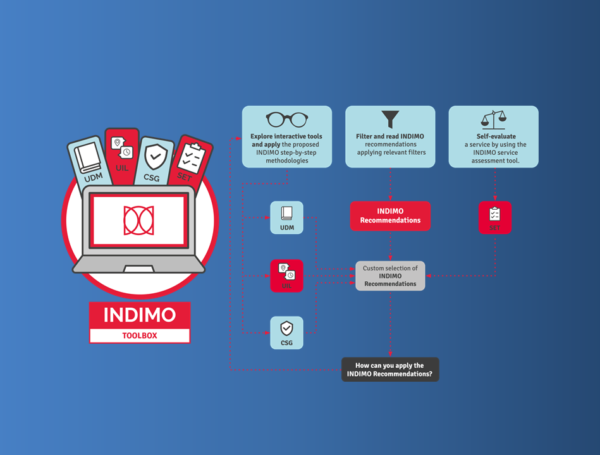by Evelien Marlier, researcher at European Passengers’ Federation
As our project nears the end of Pilot Phase 1, we have gained some valuable insights into user requirements across the different INDIMO pilots. With the aim of understanding how end users would receive new or redesigned INDIMO digital mobility services, we developed a customised survey to target vulnerable end users for each pilot. We looked into user goals, needs and preferences in addition to the aspects related to physical service, support, privacy and security offered by digital tools. ZLC monitored and aligned these activities while EPF analysed the results. All local partners were additionally responsible for collecting the data and designing the surveys.
Our research was focused on four key areas, with the aim of filling in the gaps from previous data gathering activities:
- Social context: Can participants rely on their social networks? Do participants receive (professional) support? What are the motivations for using digital mobility services?
- Specific context in which they (would) use the tool: when would people would make use of the service? What time of the day, where and why would they use the services? Which broader conditions are there?
- Priorities for technological development: What should be the priorities when we are improving the different digital mobility services? What aspects are most urgent?
- Empowerment of vulnerable-to-exclusion groups: How can we best support the different target groups so that they feel more comfortable in using the digital services?
After the data collection from the project’s pilots, EPF evaluated the results to draw conclusions about the necessary requirements and needs for the pilots’ digital mobility services.
One of the most important findings from our study is that it is becoming more and more difficult to apply user segmentation: there are huge differences across user groups but also within user groups. Users across the pilots indicated that it is very important that the digital mobility systems have an appropriate level of ‘personalisability’. A person’s travel preferences can vary, depending on a specific context (travelling alone / with others, travelling for work / leisure, making a chain-trip or not, having access to public transport or a private car etc.). So when designing mobility services, it is necessary to take into account the bigger picture and these different aspects as well.
We also found that the following elements are key for empowering users to utilise a digital mobility service:
- Online and offline tutorials
- Explanation and recommendation from trusted organisations and members of a person’s social network
- Reviews from other users
- A trustworthy label
Based on these assessments and others, the pilot projects will (re)design their services.




